The best sun protection for children and other questions about going on vacation with children to ask the pediatrician
 Ms. Sara Straub is an experienced pediatrician and manages the pediatric practice in Zurich Stadelhofen as Site Manager.
Ms. Sara Straub is an experienced pediatrician and manages the pediatric practice in Zurich Stadelhofen as Site Manager.
She likes to spend her vacations in the sun and by the water, so using the right sun protection for children is important for her. In the interview, she answers these and other questions about vacations with children.
Ms. Straub, what do you recommend parents pack in their suitcase when going on vacation in the sun?
I think it's very important that children are protected from the harmful effects of the sun's rays. The suitcase should contain a very good, age-appropriate sunscreen, a sun hat with neck protection, and light but long-sleeved clothing, preferably with integrated UV protection.
But sunglasses for children, spare swimwear to avoid catching colds, and swimming aids such as water wings and life jackets should also be included. Another form of sun protection for the beach is beach tents or, even better, sun sails (which cause less heat buildup) with certified UV protection. For swimming on beaches with stones or sharp edges in the water, aqua shoes help to protect sensitive feet from injuries and cuts.
That's quite an extensive list. You mentioned sun protection. Is it safe for babies to be in the sun at all?
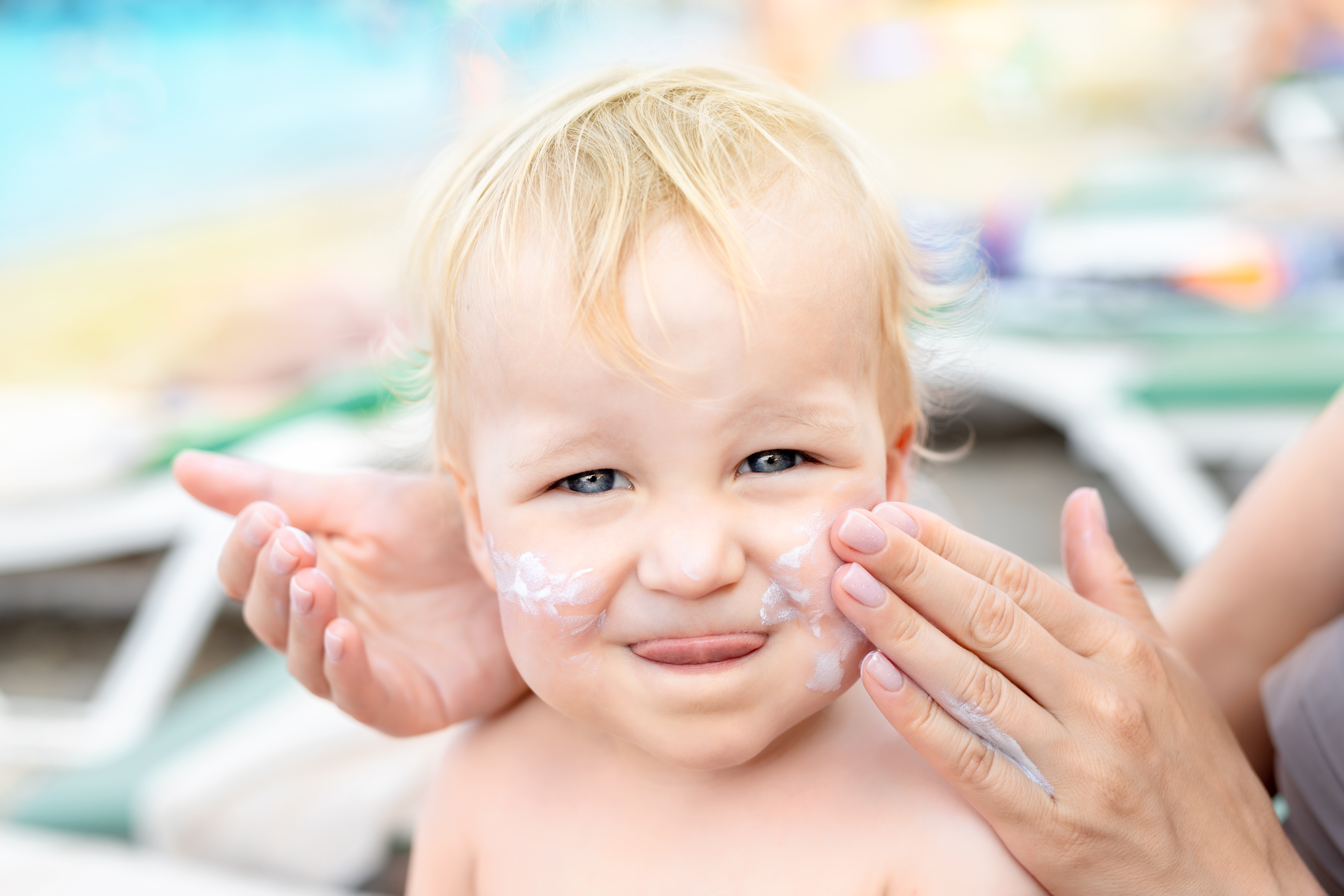 In general, I recommend not exposing babies to direct sunlight until they are one year old. But be careful: even in the shade, sunburn can occur quickly and, in the case of extreme heat, sunstroke can occur.
In general, I recommend not exposing babies to direct sunlight until they are one year old. But be careful: even in the shade, sunburn can occur quickly and, in the case of extreme heat, sunstroke can occur.
What sunscreen do you recommend for babies in different age groups?
Babies up to 6 months old, who are still content in their strollers, can be well protected with lightweight UV clothing and a UV umbrella or sun sail over the pram. The stroller should still be placed in the shade, because it is much too hot in the blazing sun. As the sun moves, the sun sail must be adjusted.
Babies in the crawling stage should wear suitable, lightweight, long UV-protective clothing and a sun hat—preferably one with neck protection. The unprotected areas—especially the hands, feet, and face—must also be protected with sunscreen, even in the shade.
Sunscreen and sand—that's a tricky combination.
As a pediatrician, do you have any tips on how to avoid creating that well-known sand-sunscreen mix on the skin when applying sunscreen to crawling babies?
I recommend applying sunscreen early so that it is completely absorbed before children start playing in the sand. When reapplying sunscreen, crawling babies are best placed, for example, in a small inflatable pool without water, with some of their favorite toys, and under a sun sail until the sunscreen has been fully absorbed. Later on, this can even be used to allow them to splash around in very small amounts of seawater safely.
Ms. Straub: Do you also have sun protection tips for older children?
Even after they turn one year old, sun protection remains very important: tight, lightweight clothing (shirt, pants, hat) and sunscreen on exposed areas are highly recommended. It is also important to protect their eyes with sunglasses that have good UV protection (with a quality seal). Don't forget shoes—the ground and sand are often very hot in the sun and there is a risk of children burning their sensitive feet. Children often don't notice this immediately, unlike adults.
By the way: Parents should set a good example and protect themselves from excessive sun by using sunscreen, a sun hat and sunglasses.
What time of day do you recommend parents sunbathe with children?
I advise parents with children of all ages to prioritize going to the beach or pool in the early morning or late evening hours. Above all, they should avoid being out in the strong midday sun and heat between 11 a.m. and 3 p.m.
Why is sun protection so important for children?
In contrast to adult skin, children's skin is not yet fully mature and the protective outer layer of skin is much thinner. The repair mechanisms are also not yet fully developed. Children's skin, and especially babies' skin, burns much faster and this can, at worst, lead to long-term damage. Even the smallest sunburn can cause burns and, later on, skin cancer.
Children's skin is also very sensitive to chemical and physical pollutants, which is why choosing the right sunscreen is extremely important.
Which sunscreen do you recommend as a pediatrician?
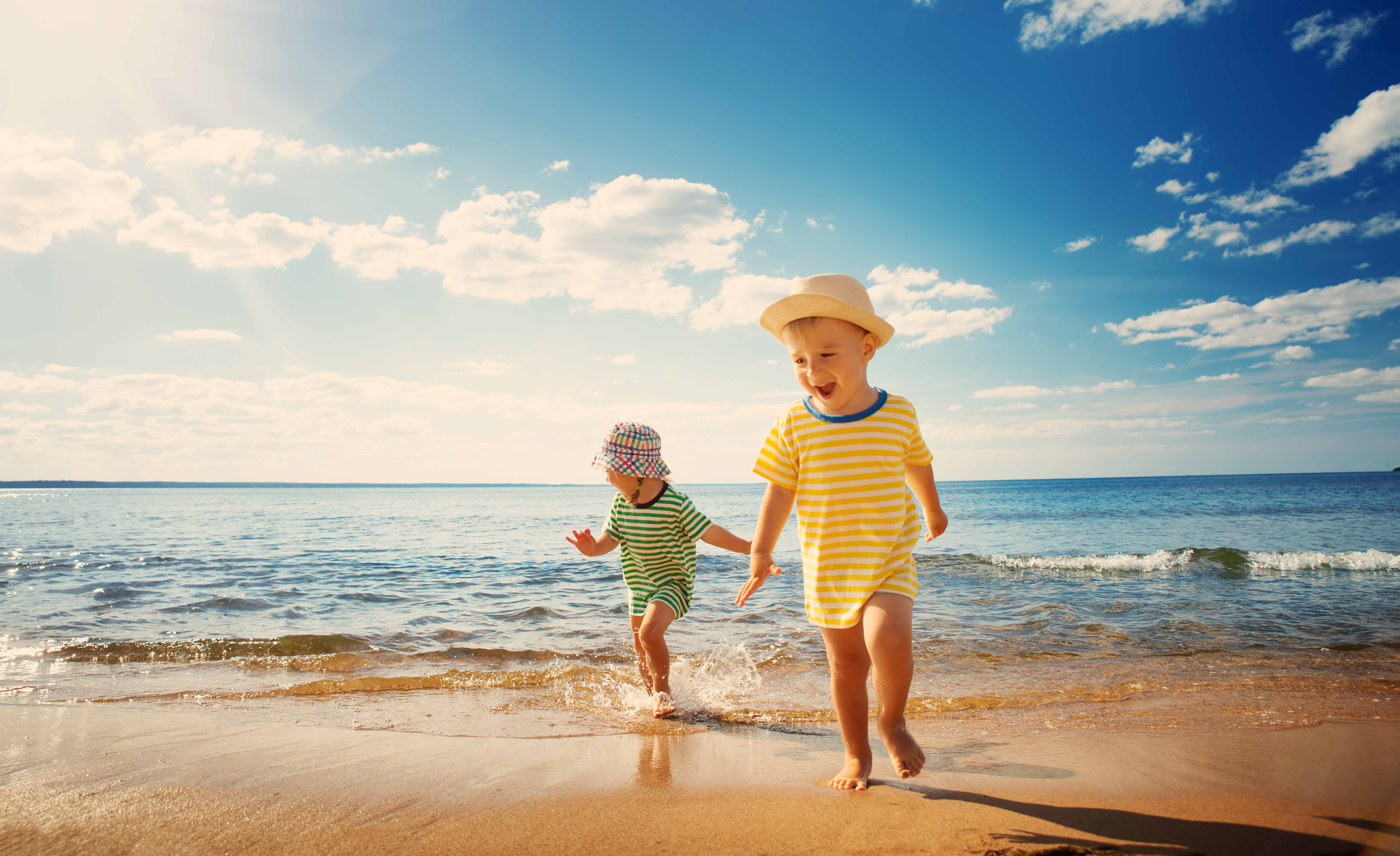 It depends on the children's age. For children up to the age of 4, I recommend using a sunscreen with a physical UV filter (mineral sunscreens). These products with micropigments provide instant protection immediately after application.
It depends on the children's age. For children up to the age of 4, I recommend using a sunscreen with a physical UV filter (mineral sunscreens). These products with micropigments provide instant protection immediately after application.
Applying them is a bit more difficult because the creams are thicker and more viscous. In addition, these sunscreens also appear white.
However, this isn't necessarily a bad thing—on the contrary, it allows you to see very clearly which areas haven't been properly covered with sunscreen yet. For older children, you can also use sunscreen with a chemical filter. A high sun protection factor of 50+ is also a must.
Can you advise parents which sunscreen ingredients they should know about and avoid?
I don't think that colorings, fragrances, parabens or alcohol belong in sunscreens for children. I also recommend avoiding substances such as benzophenone, octocrylene, octyl methoxycinnamate, PEG/PEG derivatives and, if possible, nanoparticles. Some of these substances are classified as potentially carcinogenic or hormonally active, or they may make the skin more permeable to foreign substances, and their absorption through the skin has not yet been fully studied.
When and how often should parents apply sunscreen to their children?
I recommend applying sunscreen before going to the beach or pool. Sunscreen should not be used too sparingly. A good amount is 3 to 5 teaspoons of sunscreen for a child. And: even with waterproof sunscreen, you need to re-apply it after drying off.
And if it does happen: how do you recommend treating children with sunburn, Ms. Straub?
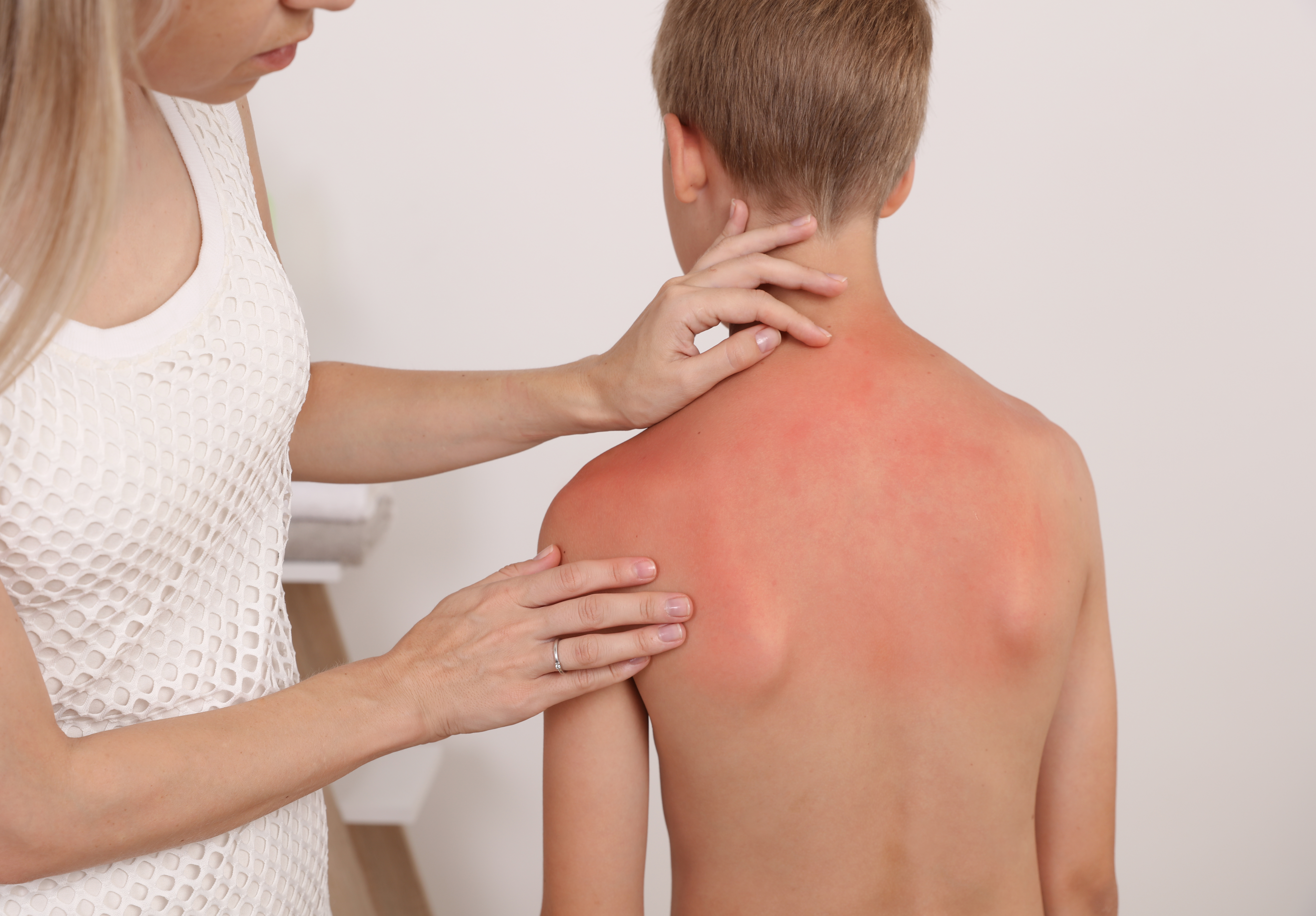 I recommend that parents cool the affected areas with water or cool compresses. These serve as an analgesic. A moisturizer with panthenol or aloe vera soothes the skin.
I recommend that parents cool the affected areas with water or cool compresses. These serve as an analgesic. A moisturizer with panthenol or aloe vera soothes the skin.
I also advise parents that further exposure to the sun must be strictly avoided until the skin is no longer red.
If blisters form on the skin, large areas of the skin are affected, or the child is still very small, the child should be taken to the pediatrician immediately.
Do you also see children with sunstroke or heat stroke in your practice? What are the symptoms, and how can you treat them?
I always see children with conspicuous symptoms after hot days. Children with sunstroke are exhausted, tired, cry a lot, sometimes have a fever, complain of headaches and often even vomit.
It's important for them to stay in a cool, darkened room. Pain medication such as Algifor (ibuprofen) lowers fever and relieves pain. The child should make sure they're drinking enough—if necessary, give it to them with a spoon. If the symptoms persist and the child's general condition is poor (very limp, different from usual), the child should be taken to the pediatrician.
That sounds fairly dangerous. Are there any other things you advise parents to do when they're at the beach or pool?
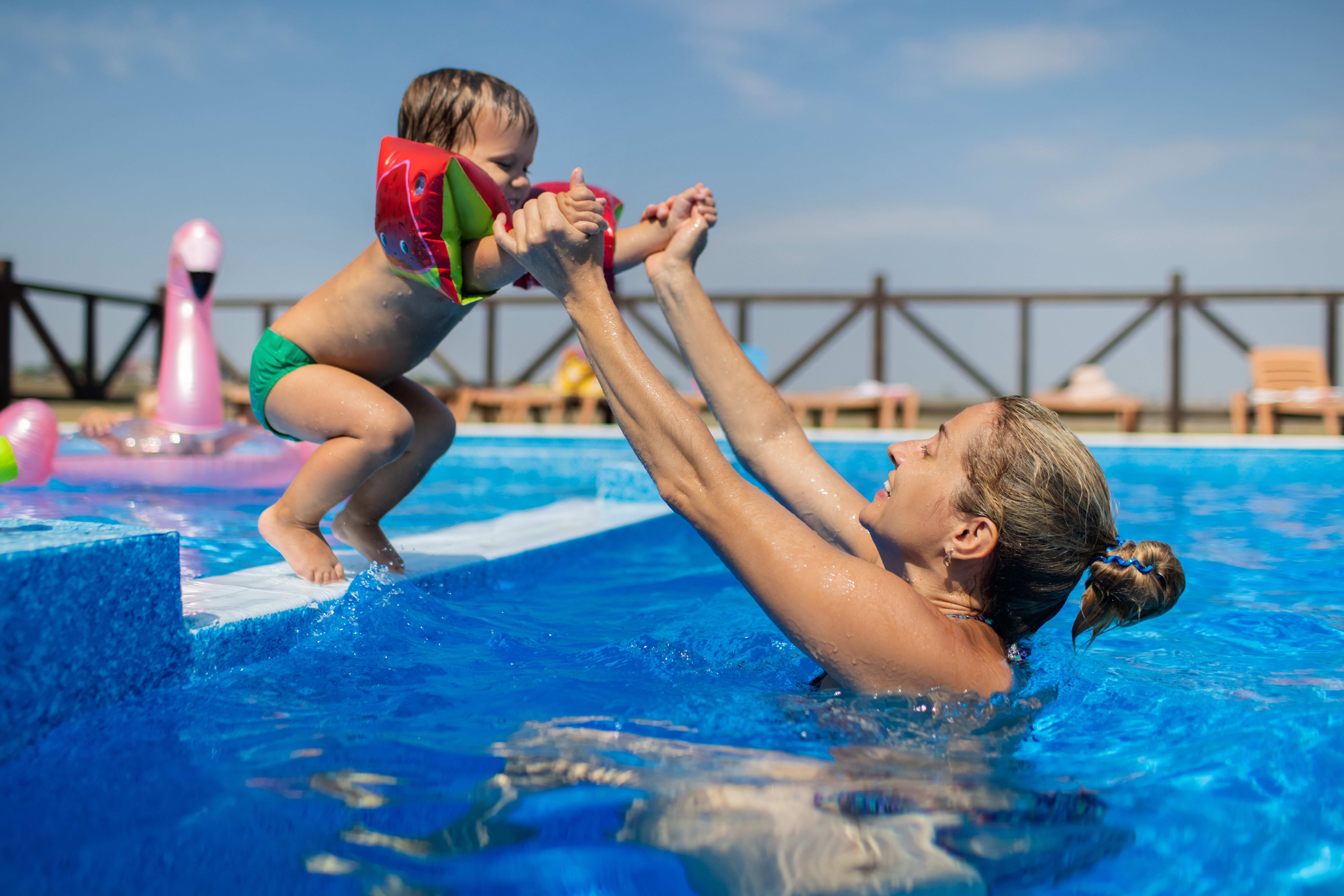
My duties as a pediatrician also include advising parents on how to protect their children from accidents.
Accidental drowning is still the second most common fatal accident in childhood. It is therefore very important to never let babies and children who cannot swim safely yet out of your sight at the beach or pool. This applies even if they are not directly near water.
"Never letting them out of your sight" means keeping them within arm's length. Children drown quickly and silently. Even being 3 meters away can be too much. For this reason, when playing near the water with children in the heat of the sun, parents should never consume alcohol.
Do parents also ask you about first aid kits for children? What do you advise?
I answer questions about first aid kits for vacations with children regularly. I believe a first-aid kit should include a thermometer and age- and body weight-appropriate fever remedies such as paracetamol (e.g., Dafalgan) and ibuprofen (e.g., Algifor). Children's nasal spray is also recommended, especially if you are flying. Other useful items include powder for preparing an electrolyte drink in the event of vomiting or diarrhea, a remedy for travel sickness, plasters, a disinfectant spray (e.g., alcohol-free Octenisept) and a small self-adhesive bandage. For small children, a wound ointment for sore bottoms, e.g., Bepanthen, should not be forgotten.
For children with known conditions, such as allergies, I recommend the appropriate medications and emergency medications. I also advise parents in general to find out before they travel where there is a pediatrician on-site should their child fall ill. Travel providers can usually answer this question well.
Thank you for the interview and for the valuable information, Ms. Straub!
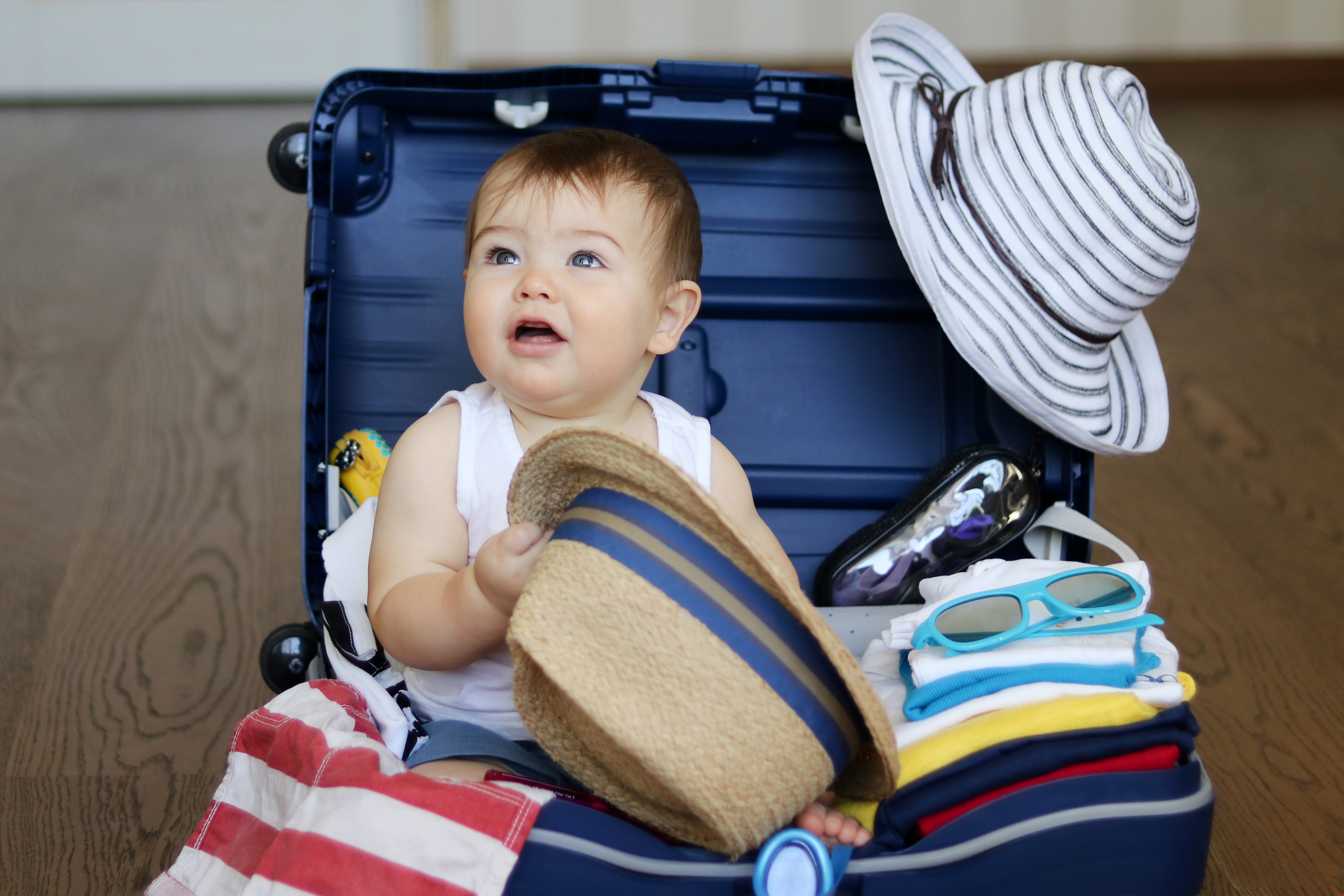 It's been a pleasure. We at Kinderarzthaus wish our patients and their parents a wonderful, eventful vacation and a healthy, happy return.
It's been a pleasure. We at Kinderarzthaus wish our patients and their parents a wonderful, eventful vacation and a healthy, happy return.
If parents have any questions about first aid kits or other topics related to travel, their pediatrician at the pediatric clinic will be happy to advise them.
July 6, 2022, Kinderarzthaus in Zürich Stadelhofen


